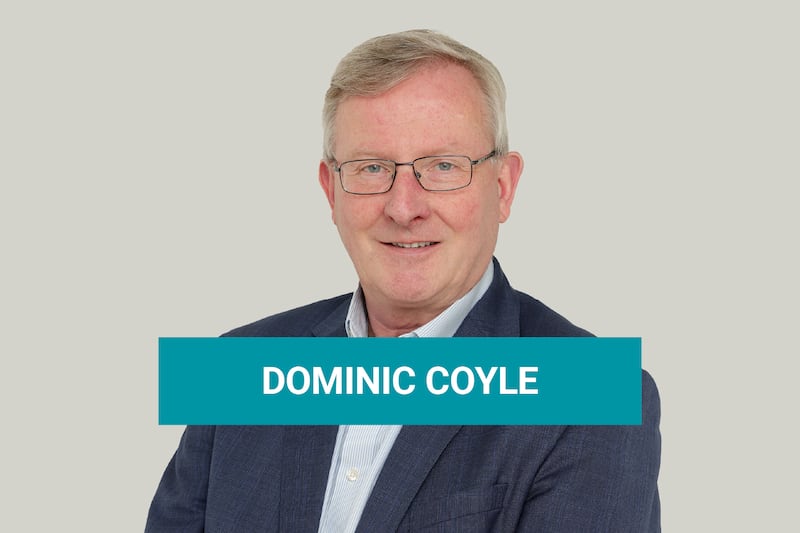The stock market frisson that greeted a Canadian activist shareholder in Ires Reit in April hasn’t — as of yet, at least — triggered the takeover battle of the summer that some had expected.
If Toronto-based Vision Capital’s aim in openly targeting the Ires’s board more than 11 weeks ago was to flush out a potential bidder for a company trading well below its reported inherent value, such speculation seems to have petered out at this stage.
The last two weeks have seen the share price of the Republic’s largest private residential landlord, with a portfolio of close to 4,000 apartments, fall by almost 8 per cent to 95.9 cents per share. It’s now back at levels last seen before Vision’s president and chief executive Jeffrey Olin urged that the company put itself up for sale or face the threat of him calling an extraordinary general meeting.
More pressing matters are now in focus at Ires. With third-party valuers set over the coming weeks to run the rule over the company’s portfolio as it stood on Friday, the end of the first half of the year, followers of the stock are keeping a close eye on the real estate trust’s legal loan-to-value (LTV) restrictions.
Students must learn to be more than mindless ‘machine-minders’
A Communion in the house? Your child’s first chance to learn about money
I’m in my 70s and have €500,000 in savings. If I need to go into a nursing home, what happens if I run out of money?
Microsoft emphasises commitment to Ireland, which can ‘count on us’
Ires was forced to shave €45.6 million — or 3 per cent — off the gross value of its portfolio last year, mainly as investment property assets were hit amid rising interest rates. The European Central Bank (ECB) hiked its benchmark deposits rate from minus 0.5 per cent last July to 2 per cent in December.
This pushed the company’s borrowings up to 43.3 per cent of the value of its properties from 40.7 per cent a year earlier — and closer to the 50 per cent LTV cap Ires is bound to by Irish real-estate investment trust legislation and its own borrowing covenants.
The ECB’s main rate has subsequently increased to 3.5 per cent, and financial markets are currently pricing in further increases, to 4 per cent by the end of the year. Industry sources see Ires’s independent valuers taking out their red pens again, nudging the company closer to its limit.
To be sure, analysts at Barclays say it only expects Ires’s portfolio to decline by 8 per cent from its peak, as the Irish company’s gross rental income relative to the value of its assets is among the highest in Europe. They expect the property values across the wider sector to decline by an average of 15 per cent before hitting a low point in the current cycle.
Shares across the wider European real-estate sector, measured by FTSE EPRA Nareit Developed Europe Index, have also declined in recent weeks.

What are the key challenges when attracting new investment here?
But while Ires’s debt burden is not out of kilter with some of its closest peers, its 50 per cent LTV limit is lower than the 60 per cent average across Europe, according to Barclays.
Conscious of its obligations, Ires revealed in April (five days after Vision issued its first open letter bemoaning the company’s performance) that it plans to raise more than €100 million from the sale of non-core assets over the “short term” to lower its borrowings, which stand at about €650 million.
Irish Life Investment Managers was known around that time to have been in talks to buy Ires’s upmarket Marker apartment block in Dublin’s docklands — with a reported price tag of about €70 million. However, nothing has come of it.
Ires chairman Declan Moylan told Olin at a heated annual general meeting eight weeks ago that “there could not be a worse time to sell this company than at a time of high-interest rates, high inflation and the rental cap in Ireland”.
He may be right. But the same must also go for the assets Ires is seeking to flog to avoid any threat of breaching the 50 per cent leverage limit.
Last week National Asset Management Agency chief executive Brendan McDonagh highlighted the issues of the private rental sector (PRS) when he said he said the agency has dropped plans to deliver 400 apartments before it is wound down in 2½ years’ time. The PRS market has “almost disappeared”, he said.
Savills said last month that there were only four investment deals in the Irish PRS sector in the first quarter, down from 13 for the same period in 2021. Aside from the impact of rising interest rates, it said investor interest had also been hit by “negative media attention and interventions”, rising construction costs and rental growth caps.
“The funding and development model for apartments in Ireland is broken and has been for a number of years,” property agents Hooke & MacDonald said in a report published this month. “It has only been through the development of the private rental sector that most apartments [in recent years] have been built.”
Institutional investors and pension funds have been responsible for funding more than 15,000 apartments in Ireland in the past six years, it estimates. “If these had not been built the rental market would now be in a far worse position than it currently is.”
The 2 per cent cap on rent increases introduced by the Government across pressure zones across the State may limit the ability of Ires and others to take advantage of supply shortages. But they are also contributing to the slowdown in investor interest in the sector — and construction.
However, Vision’s Olin, who has gone quiet since issuing a flurry of open letters on Ires in April and holding court at its annual general meeting early the following month, signalled on Friday hasn’t gone away.
Responding to a question from The Irish Times about whether any developments might be in the works, he offered two words: “Stay tuned.”
















